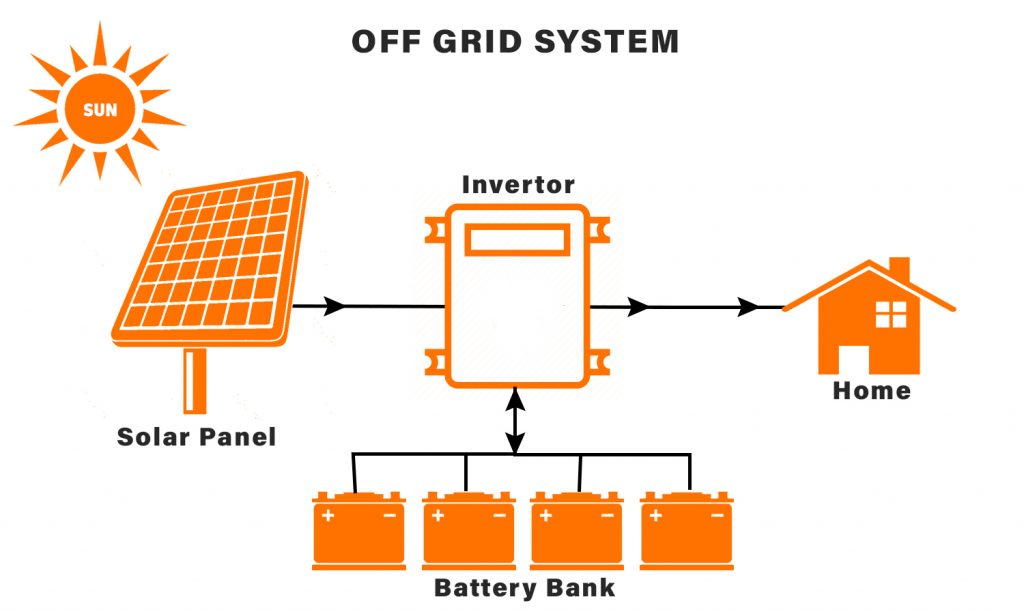
Overview
Off-grid solar systems, also known as stand-alone solar systems, are designed to operate independently of the public electricity grid. These systems rely entirely on solar panels and battery storage to provide electricity, making them ideal for remote or rural areas without access to a reliable grid connection. Off-grid systems are self-sufficient, generating and storing their own electricity, which ensures a continuous power supply even during grid outages.
Key Components
- Solar Panels: Capture sunlight and convert it into electrical energy.
- Inverter: Converts the DC electricity generated by the panels into AC electricity, which is used to power household appliances and devices.
- Battery Bank: Stores excess energy generated during sunny periods for use during nights or cloudy days, ensuring a continuous power supply.
- Charge Controller: Regulates the flow of electricity between the solar panels and the battery bank, preventing overcharging and protecting the battery life.
- Mounting System: Secures the panels in place, optimizing their position for maximum sunlight exposure.
- Wiring and Electrical Components: Connect and distribute electricity throughout the system.
How It Works
Off-grid solar systems generate electricity by converting sunlight into electrical energy through solar panels. The electricity produced is stored in a battery bank via a charge controller, which ensures that the batteries are charged optimally and protected from overcharging. The stored energy can then be used to power household appliances and devices through an inverter, which converts the stored DC electricity into usable AC electricity. This system operates independently, providing energy even when there is no sunlight, thanks to the stored power in the batteries.
Benefits
- Energy Independence: Completely independent of the public electricity grid, making it ideal for remote areas.
- Uninterrupted Power Supply: Provides electricity during grid outages, ensuring continuous power availability.
- Environmental Benefits: Uses renewable solar energy, reducing reliance on fossil fuels and decreasing carbon emissions.
- Scalability: Can be expanded to meet increasing energy demands by adding more panels and batteries.
Drawbacks
- Higher Initial Cost: Requires significant investment in batteries and other components, making the initial setup more expensive than on-grid systems.
- Maintenance and Management: Requires regular monitoring and maintenance of the batteries and other components to ensure optimal performance.
- Energy Storage Limitations: The amount of stored energy is limited by the battery capacity, which may not suffice for extended periods of low sunlight.
Market Outlook
The off-grid solar market is growing steadily, particularly in regions with limited or unreliable access to electricity. Advances in battery technology and decreasing costs of solar panels are making off-grid systems more accessible and affordable. Government incentives and initiatives to promote renewable energy are also encouraging investments in off-grid solar solutions, particularly in developing regions. The market is expected to expand further as technology improves and awareness of renewable energy benefits increases.




